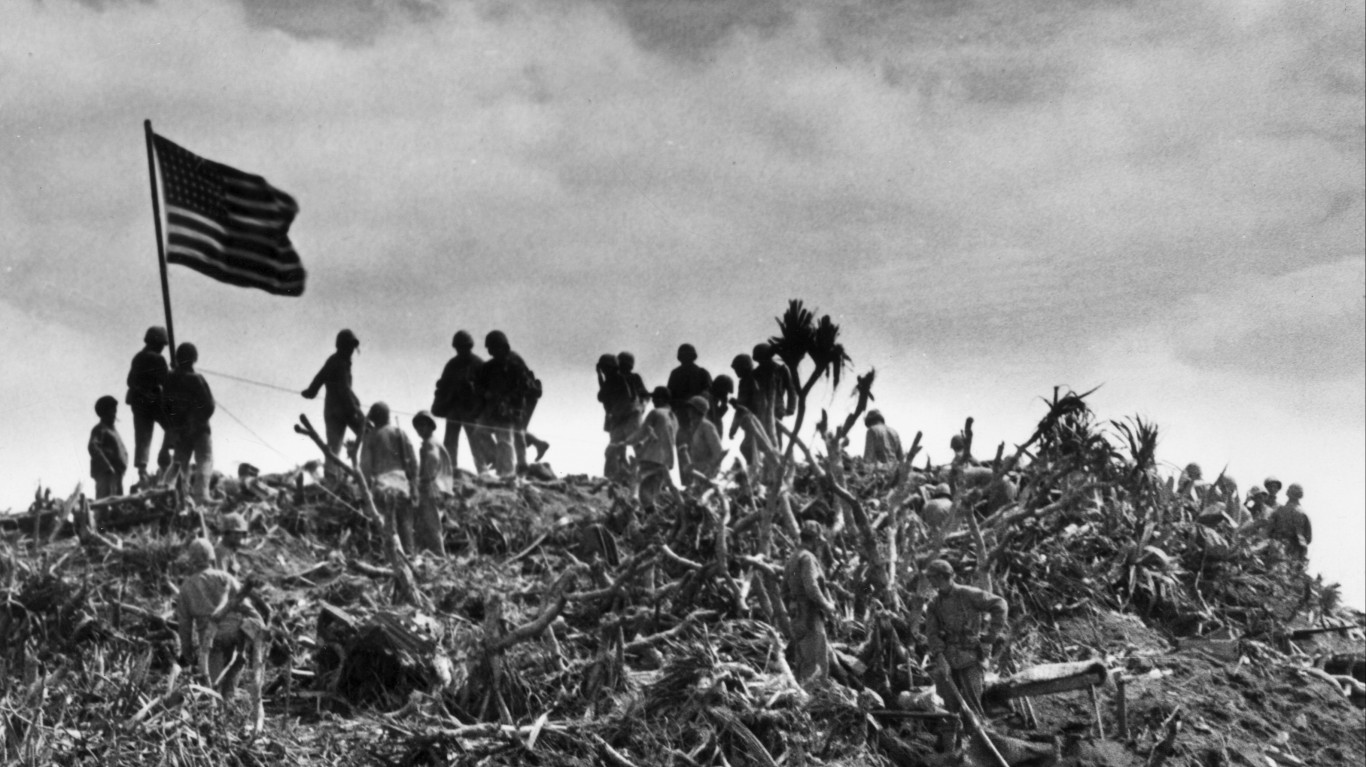
Since the founding of our nation – itself forged in warfare against our British colonial masters – American armed forces have fought countless battles on home ground and around the world. In many of these battles and series of battles (or offensives, or military campaigns), thousands of American lives have been lost – the cost of safeguarding our freedom and that of our allies.
To compile a list of America’s deadliest battles and military campaigns, 24/7 Tempo sourced data from websites such as History.com, Battlefields.org, and the HistoryCollection.com, and the National World War II Museum.
It should be noted that deaths and casualties are not the same thing; casualties include those killed but also those wounded or missing in action. In addition, some sources disagree as to the number of deaths in any given circumstance. In those cases, we have used the number most often agreed upon, though they may be approximate. And not all deaths during battle are directly from combat. A significant number during World War I, for instance, were the result of the so-called Spanish flu, which many Americans contracted while fighting in France.
Click here to read about the deadliest battles in US history
Some of the battles on our list were part of larger operations, such as the offensive against Germany in the final months of World War II, while others took place over only a day or two. Perhaps counterintuitively, despite the fact that weapons for killing opposition forces have continued to increase in deadly efficiency, our most recent conflicts – in Vietnam and the Middle East – have not accounted for the greatest losses of American lives. The single most devastating conflict in our history was the six-week-long Meuse-Argonne offensive during World War I, responsible for more than 25,000 U.S. fatalities. (These were the 18 biggest battles of World War II.)
Though many of the other deadliest battles were fought during World War II, the three-day Battle of Gettysburg during the Civil War claimed more than 7,000 soldiers – Union and Confederate both – placing it ninth-highest on this list. And the one-day Civil War Battle of Antietam still holds the record as the single bloodiest day in American military history. (Both are among the most pivotal battles that made America what it is today.)
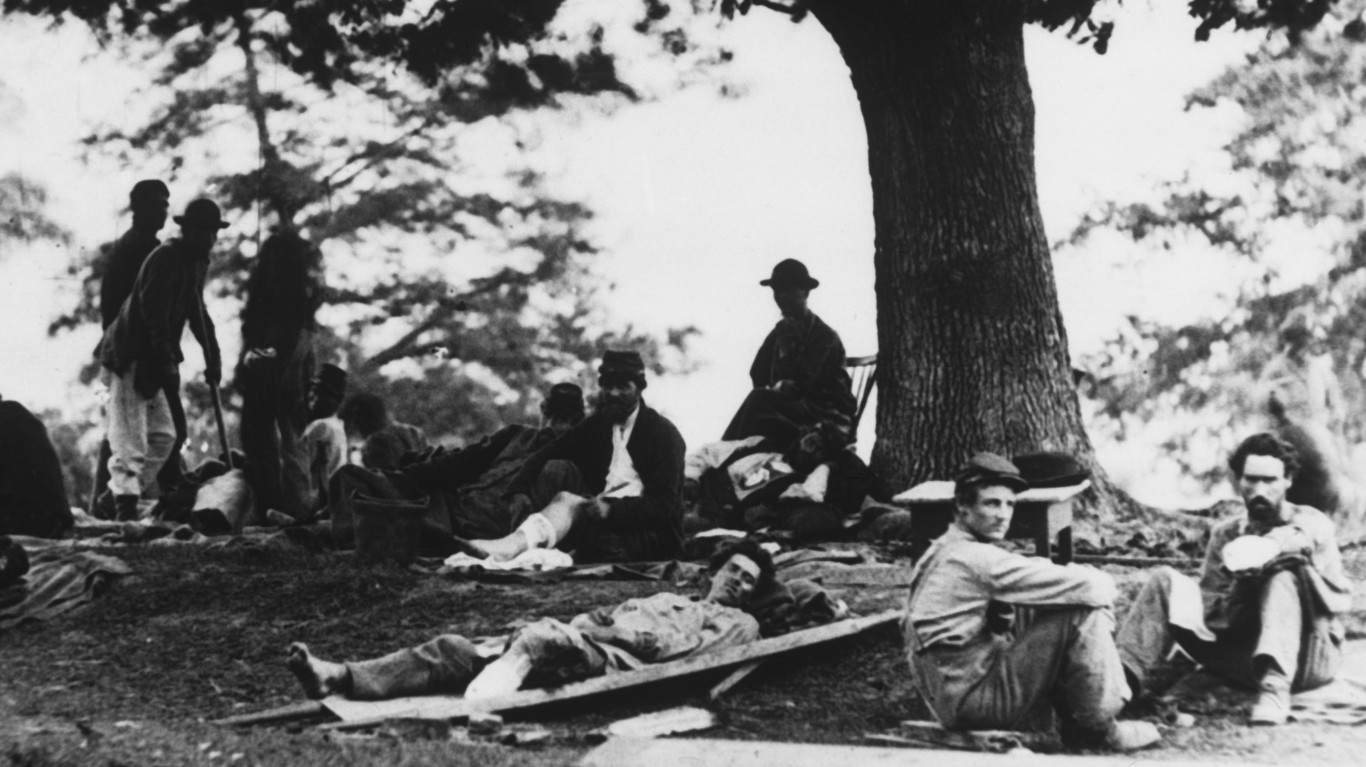
Chancellorsville campaign, Virginia (April 30-May 6, 1863)
> War: Civil War
> American fatalities: 3,418
Despite heavy casualties – both sides suffered approximately an equal number of deaths – the Battle of Chancellorsville is considered Gen. Robert E. Lee’s greatest military victory. It was the last battle for Confederate Lt. Gen. Thomas J. “Stonewall” Jackson, who was mortally wounded by friendly fire, dying of pneumonia eight days later.
[in-text-ad]
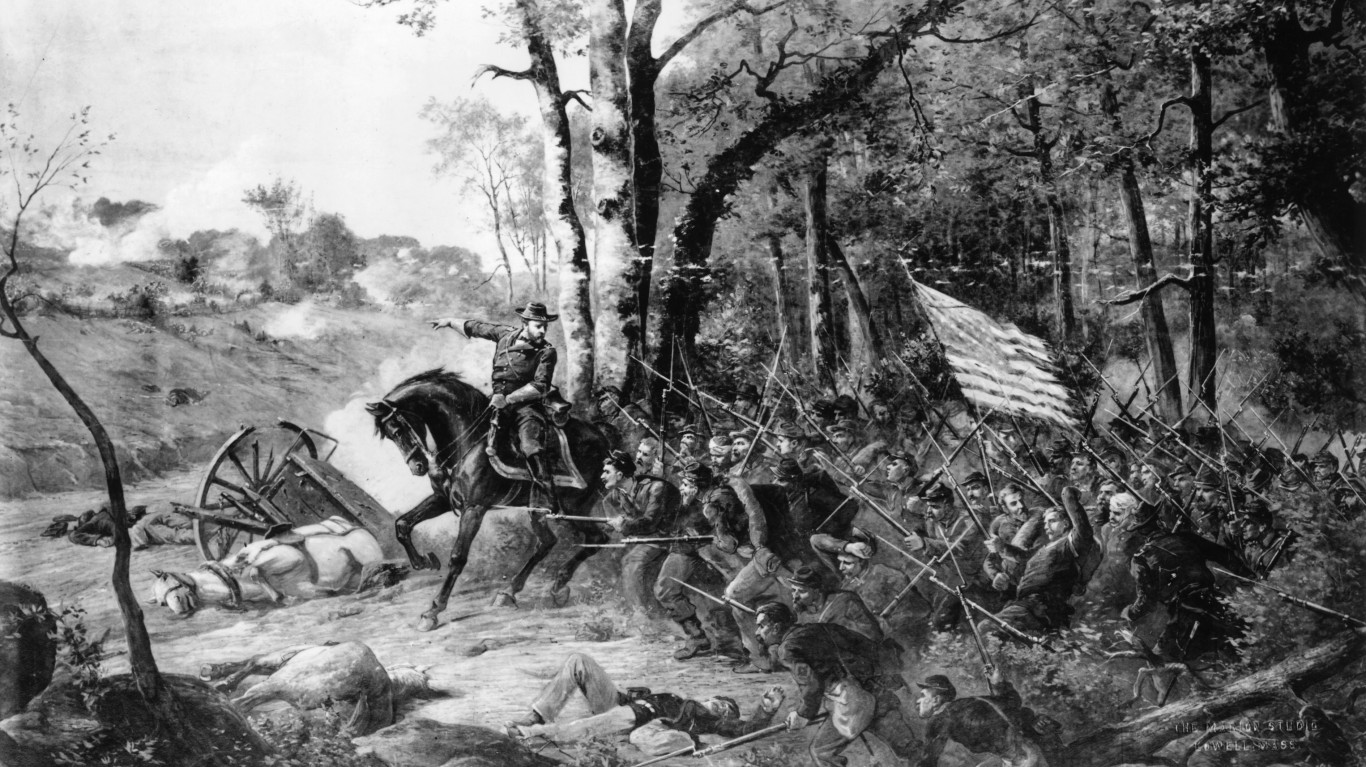
Battle of Shiloh, Tennessee (April 6-7, 1862)
> War: Civil War
> American fatalities: 3,482
Another battle in which each side lost approximately the same number of troops, Shiloh was a Union victory. One of the Confederate casualties was General Albert Sidney Johnson, who was killed in battle. The South’s defeat ended the Confederacy’s hopes of blocking the Union advance into Mississippi and doomed the Confederate military initiative in the West.
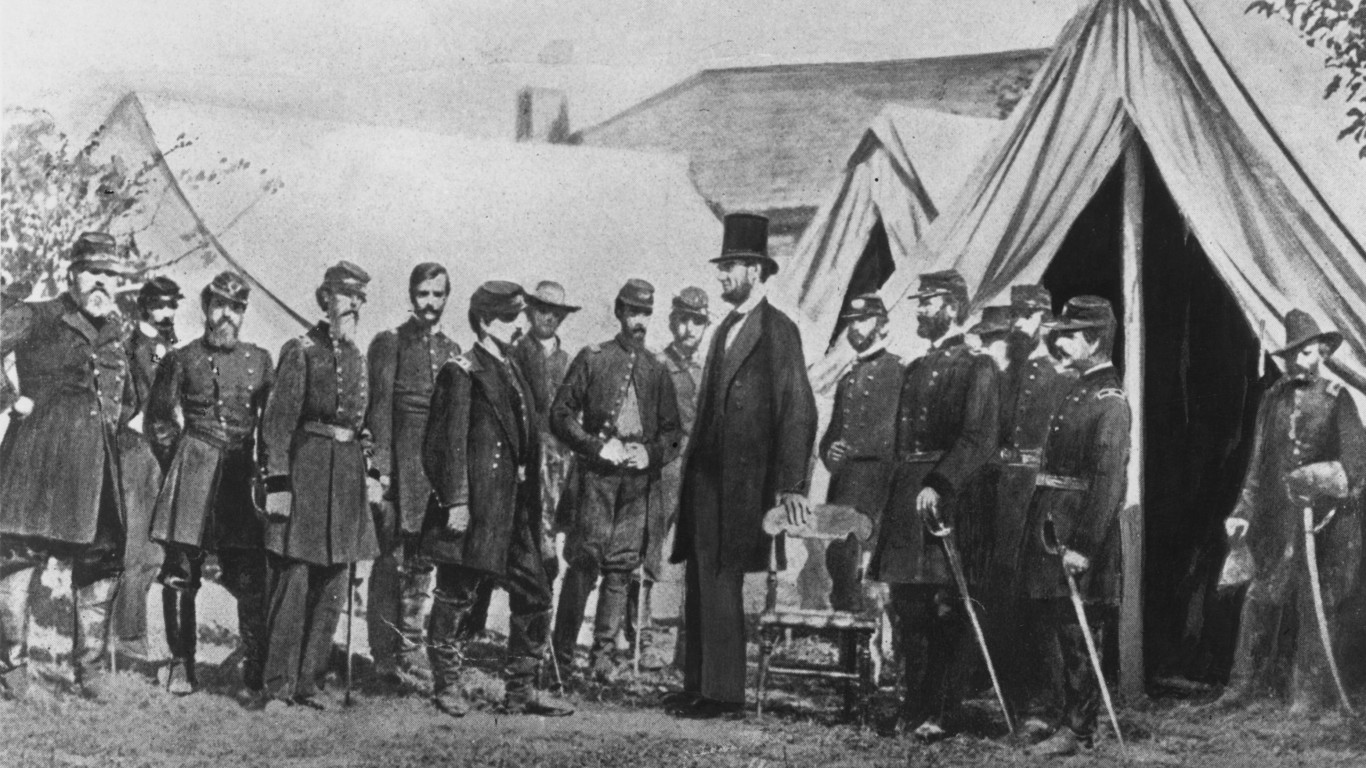
Battle of Antietam, Maryland (Sept. 17, 1862)
> War: Civil War
> American fatalities: 3,654
This single occasion marks the single bloodiest day in American history, with a total of 22,727 combatants on both sides either killed, wounded, or missing in action. Though the victor of the day was inconclusive, the battle is considered a turning point in the war, as General George B. McClellan’s Union troops stopped Southern advance in North
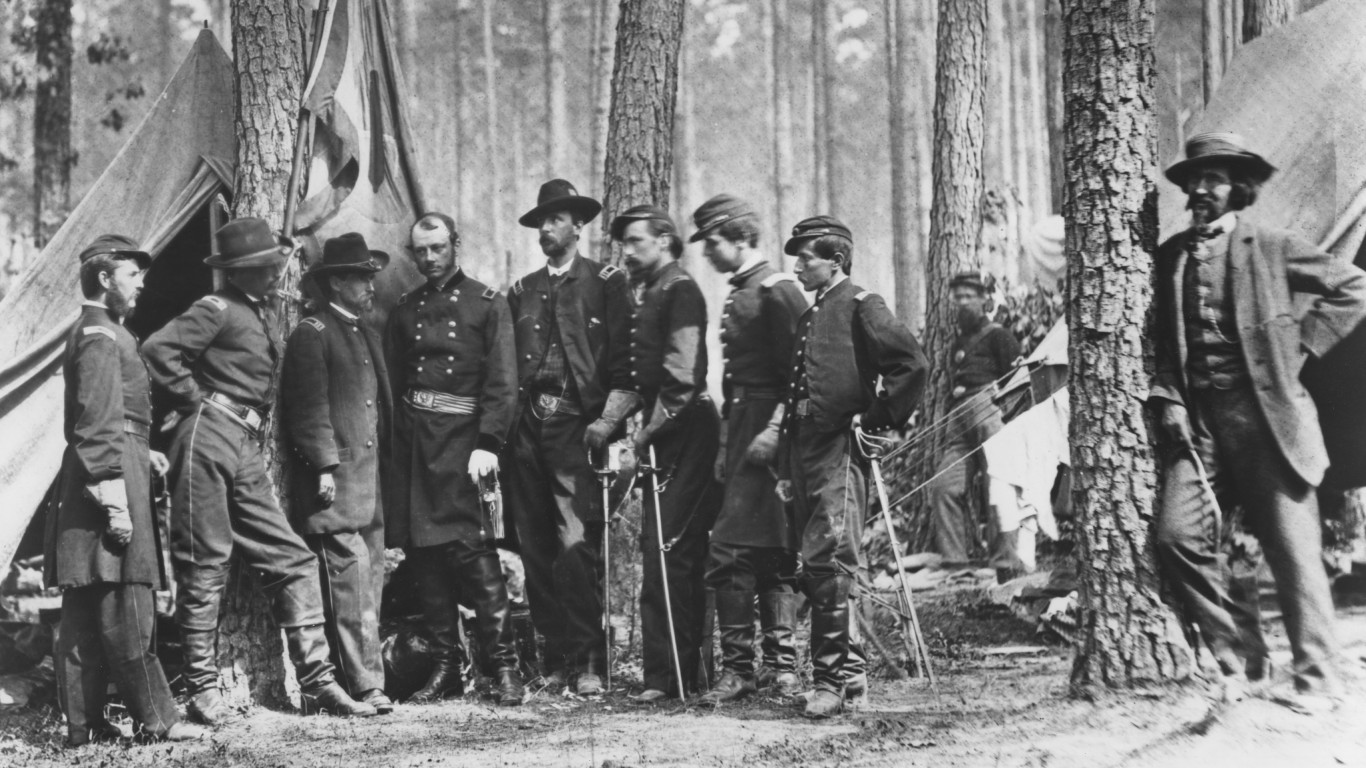
Battle of the Wilderness, Spotsylvania and Orange counties, Virginia (May 5-7, 1864)
> War: Civil War
> American fatalities: 3,723
After two days of combat, the two armies were essentially where they had been at the start of the battle. The Union army suffered more than 17,500 casualties over 48 hours – thousands more than the toll endured by the Confederates – with 2,246 killed, compared to 1,477 Rebels.
[in-text-ad-2]
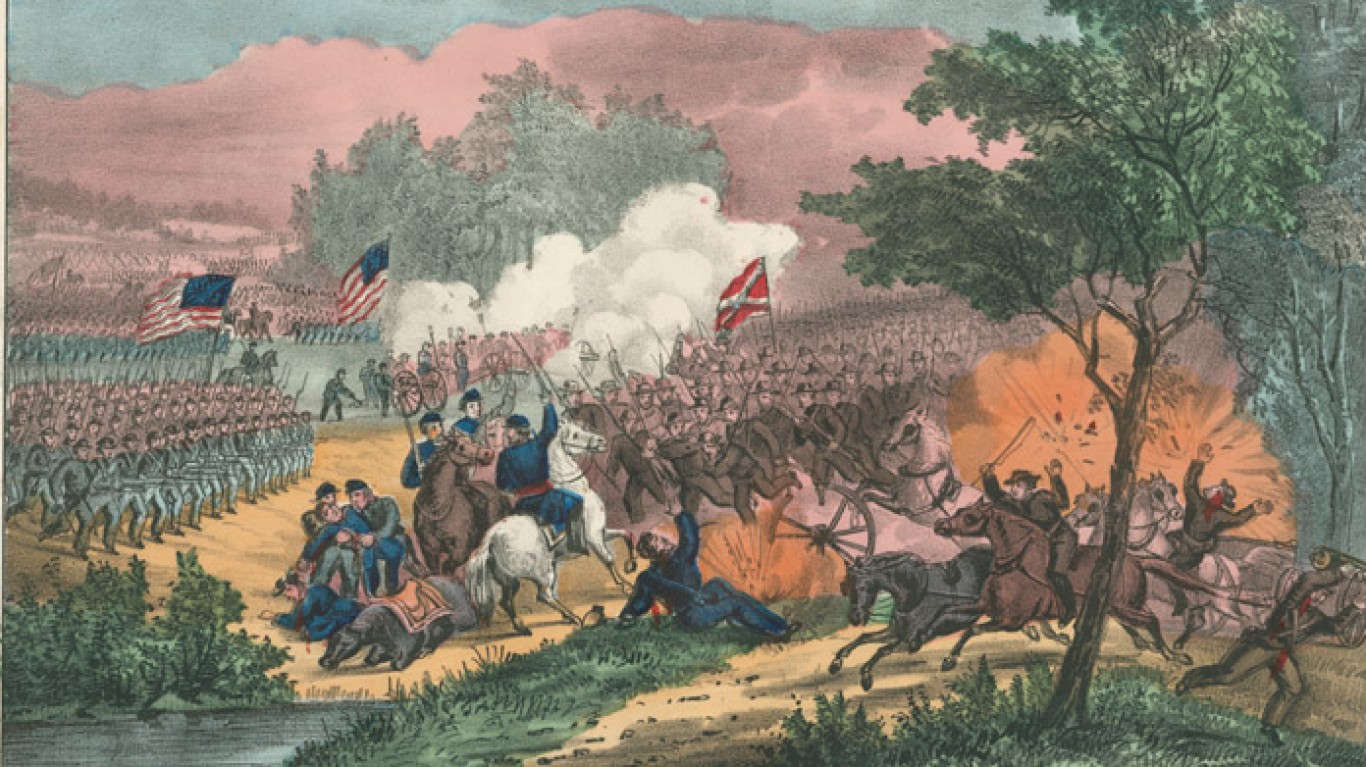
Battle of Chickamauga, Tennessee (Sept. 18-20, 1863)
> War: Civil War
> American fatalities: 3,969
On one of few occasions that the South had a slight numerical advantage over the North, the Confederate army secured a decisive victory at Chickamauga, but lost more men in battle. This was the first major battle of the war to be fought in Georgia, and the worst Union defeat in the Western Theater.
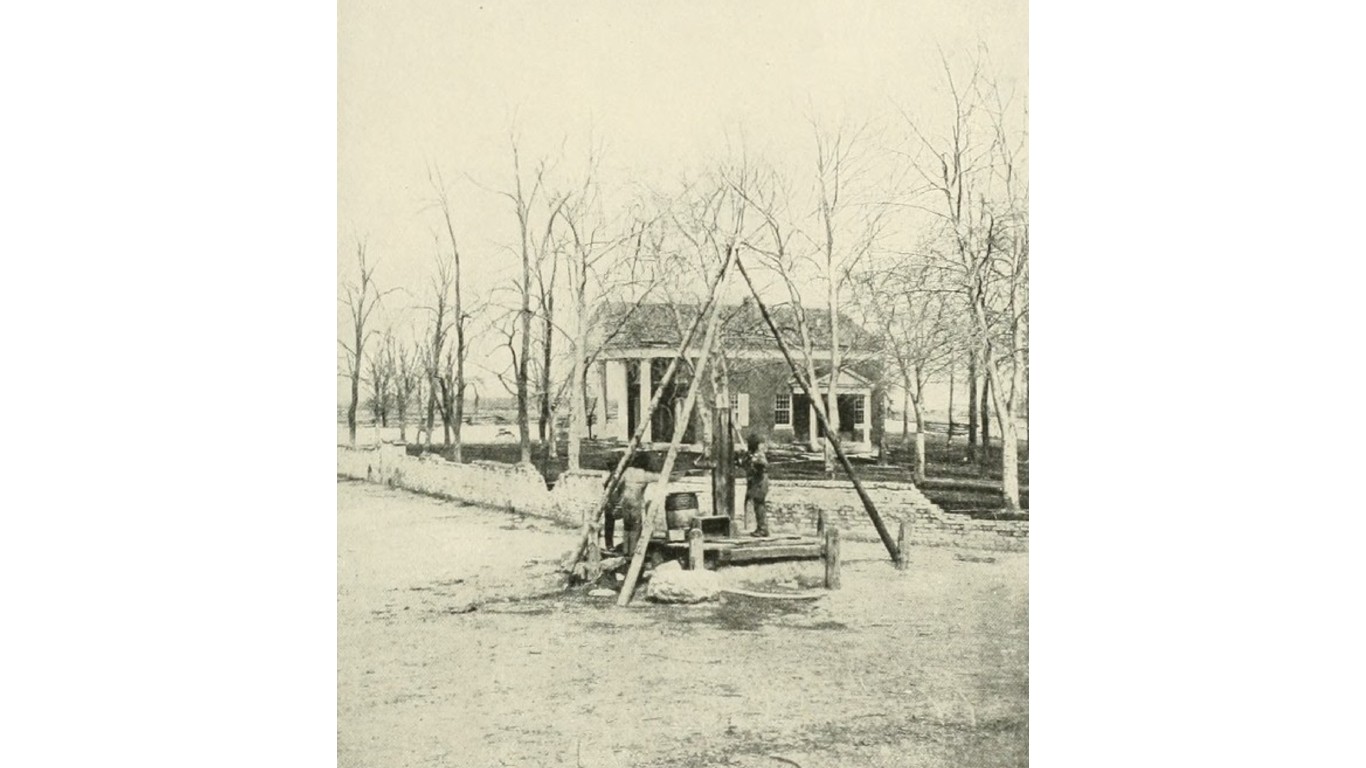
Battle of Spotsylvania Court House, Virginia, (May 8-21, 1864)
> War: Civil War
> American fatalities: 4,267
Raging for more than two weeks, immediately following the Battle of the Wilderness, this bloody conflict claimed almost twice as many Union as Confederate lives, but was ultimately inconclusive, with General Ulysses S. Grant failing to break through the Confederate line.
[in-text-ad]
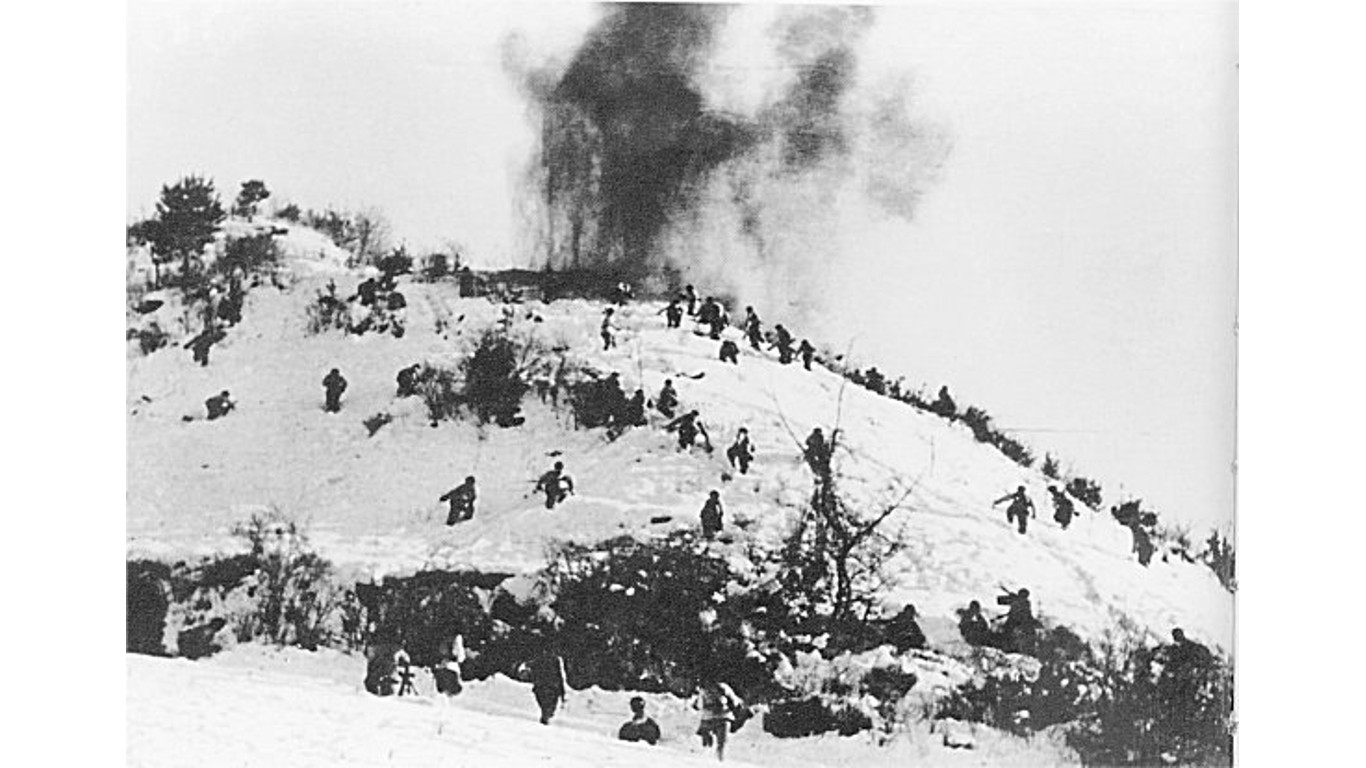
Home-by-Christmas offensive, North Korea (Nov. 24-Dec. 24, 1950)
> War: Korean War
> American fatalities: 4,500
China had entered the war in support of North Korea in October, and engaged U.S. and UN forces with help from Soviet aircraft. On November 24, underestimating the Chinese, the U.S. Eighth Army and UN forces under General Douglas MacArthur launched the so-called Home-by-Christmas Offensive towards the Chinese border. The Chinese and North Koreans ambushed them, forcing them to retreat to the south. At least 4,500 Americans perished in battle or from the extreme cold during the retreat.

Battle of Saint-Mihiel, France (Sept.12-16, 1918)
> War: World War I
> American fatalities: 4,500
The first major American offensive of the war, the battle began when the American Expeditionary Forces and a large contingent of French soldiers, under the command of General John J. Pershing, attacked German positions, hoping to break and take the important city of Metz. The U.S. Army Air Service – ancestor of the Air Force – played an important role in Pershing’s ultimate victory.
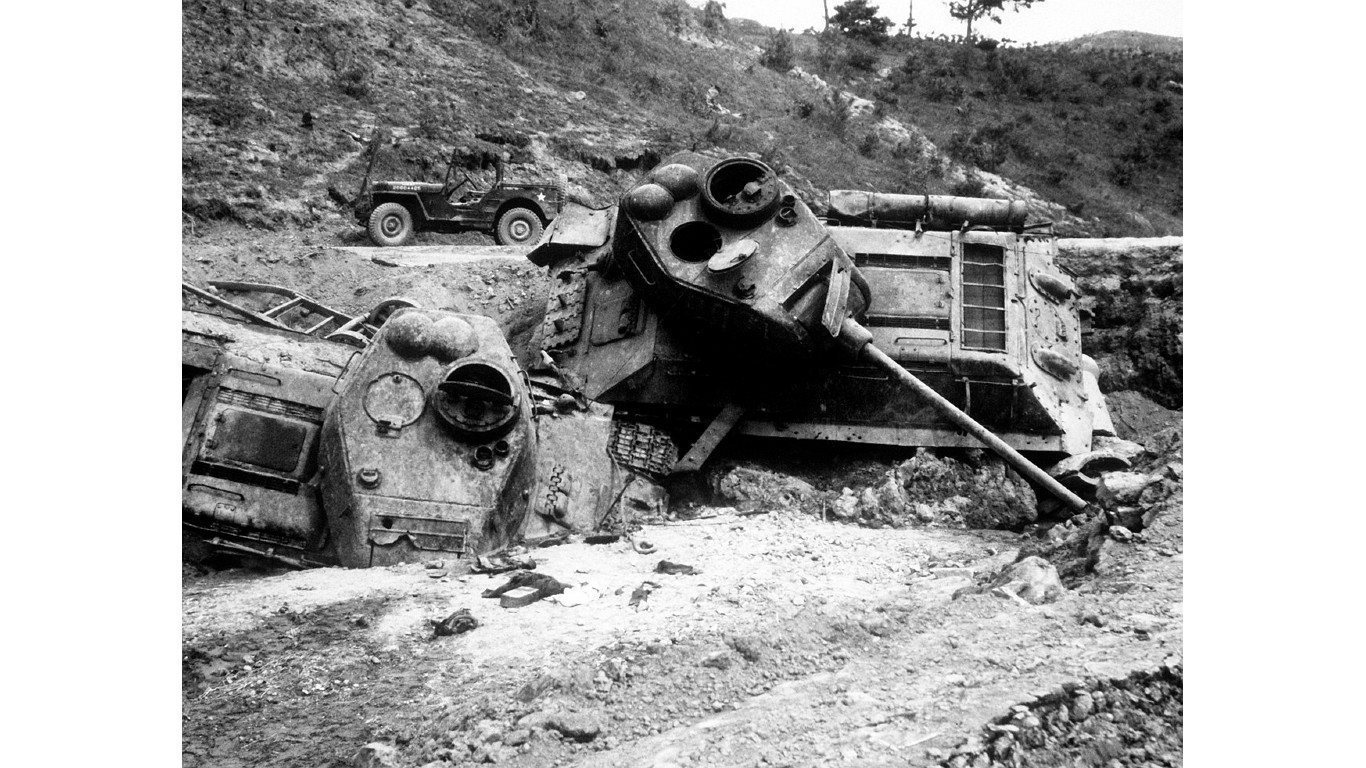
Battle of the Pusan Perimeter, South Korea (Aug. 4-Sept. 18, 1950)
> War: Korean War
> American fatalities: 5,000
U.S. forces with other United Nations troops defended the South Korean city of Pusan against a massive offensive by the North Koreans. Though heavily outnumbered, the U.S. and their allies successfully held the perimeter, despite fierce enemy attacks, buying time for reinforcements to arrive. Their success ultimately led to a counteroffensive that shifted momentum in the Allies’ favor.
[in-text-ad-2]

Battle of Anzio, Italy (Jan. 22-June 5, 1944)
> War: World War II
> American fatalities: 5,538
The purpose of this crucial amphibious landing operation on the Italian coast by Allied forces was to bypass the Germans’ heavily fortified Gustav Line and seize the port of Anzio, as a beachhead for an eventual advance towards Rome. The offensive faced fierce resistance from German forces, leading to a protracted and bloody stalemate.The Allies maintained their position, however, and the battle acted as a diversionary tactic that eventually led to the liberation of Rome.
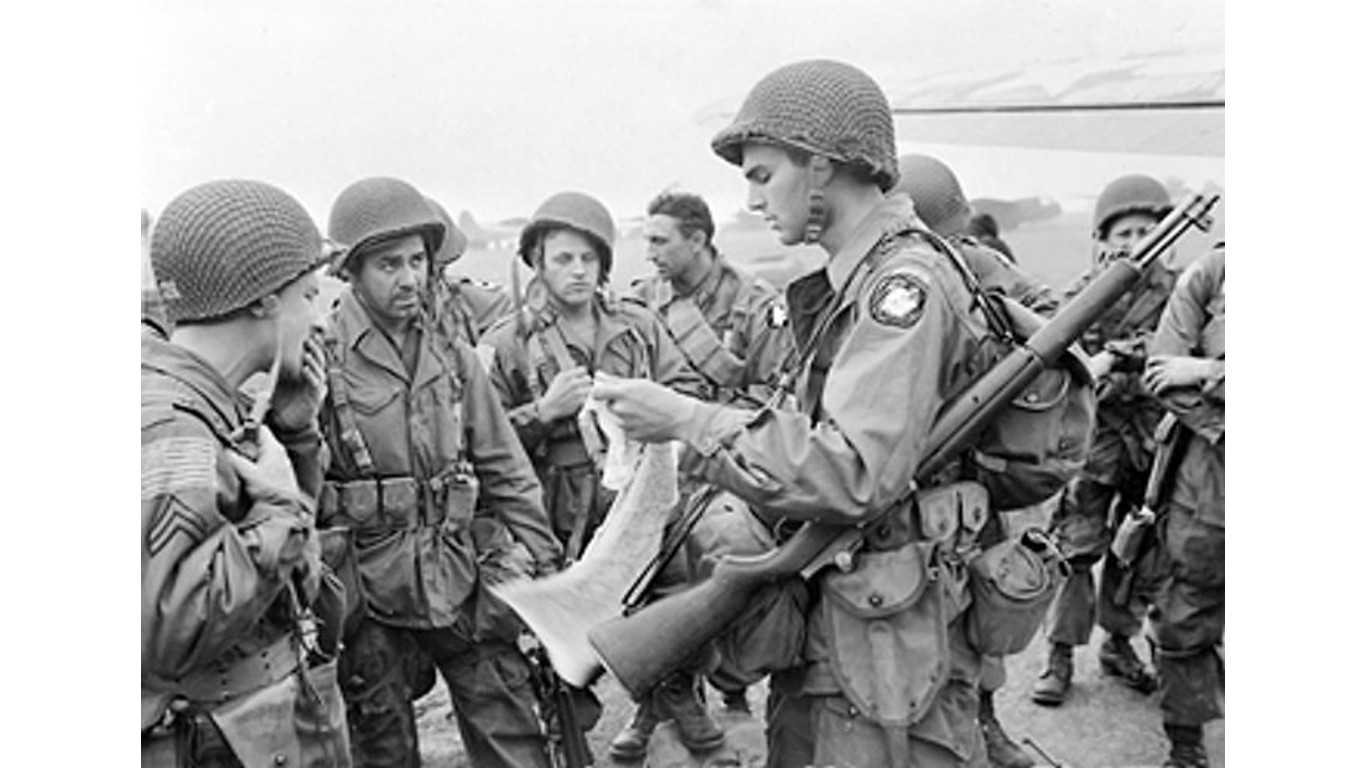
Lorraine campaign, France (Sept. 1-Dec. 18, 1944)
> War: World War II
> American fatalities: 6,657
As a part of the so-called Siegfried Line campaign – meant to breach the fortifications along Germany’s western frontier – the retaking of the eastern French region of Lorraine was the responsibility of the United States Third Army, under General George Patton. The task was challenged by Patton’s errors of judgment and the lack of supplies, particularly fuel for his tanks and armored vehicles. After months of fighting, the Third Army refocused its attention to the north, ending the campaign. Both sides suffered heavy casualties.
[in-text-ad]
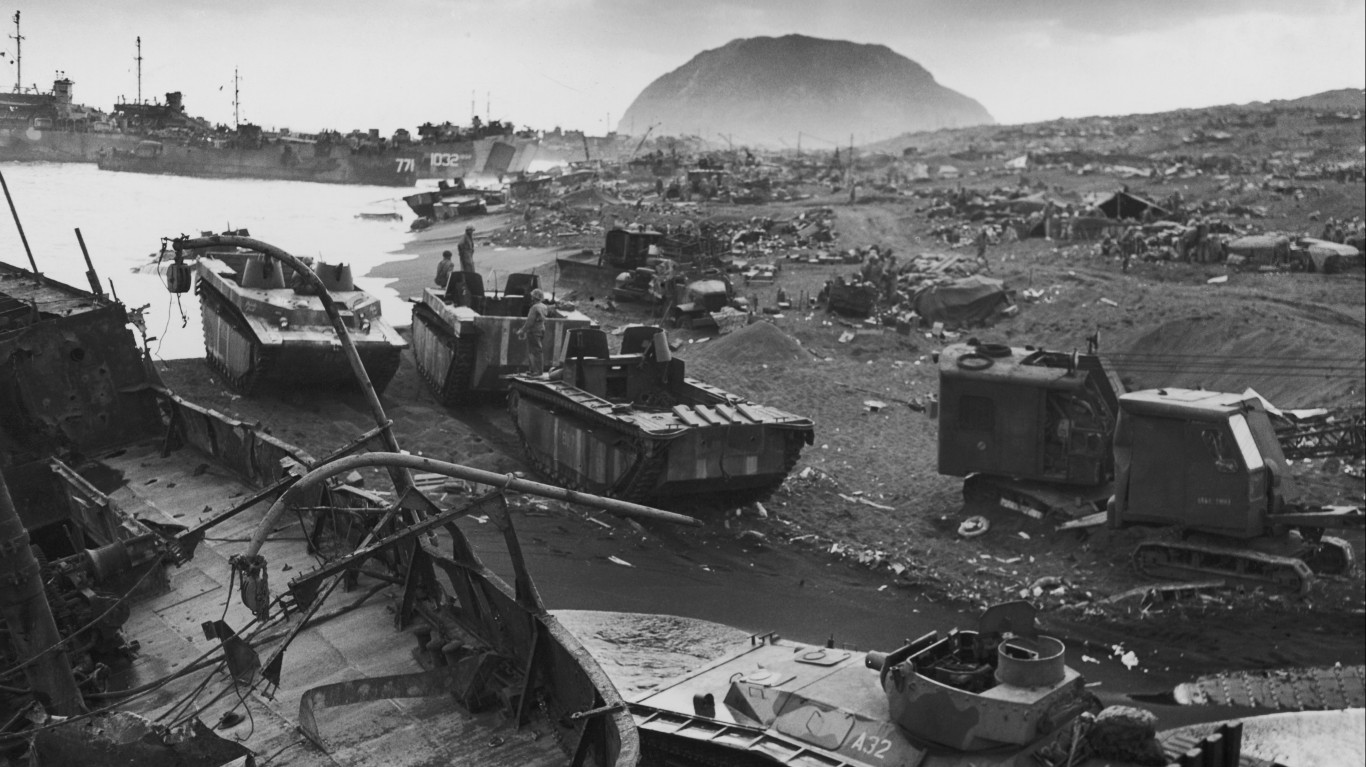
Battle of Iwo Jima, Japan (Feb. 19-March 26, 1945)
> War: World War II
> American fatalities: 6,821
A renowned engagement between U.S. Marines and Imperial Japanese forces, the Battle of Iwo Jima was an important engagement during the Pacific campaign. Capturing the small volcanic island in far southern Japan was vital for establishing air bases to support further operations, but it resulted in some of the bloodiest fighting in the war, with both sides sustaining heavy losses.

Battle of the Colmar Pocket, France (November 1944-Feb. 9, 1945)
> War: World War II
> American fatalities: 7,000
Part of the Allied campaign to free eastern France from the Nazis, the battle pitted the U.S. 6th Army and the French 1st Army against Germany’s 19th Army in a pocket of land around the Alsatian city of Colman that included bridges across the Rhine from which German troops were resupplied. Hitler ordered the German troops to hold their ground at all costs, but the Allies prevailed and the pocket was eliminated – costing Germany a large percentage of its trained combat troops.
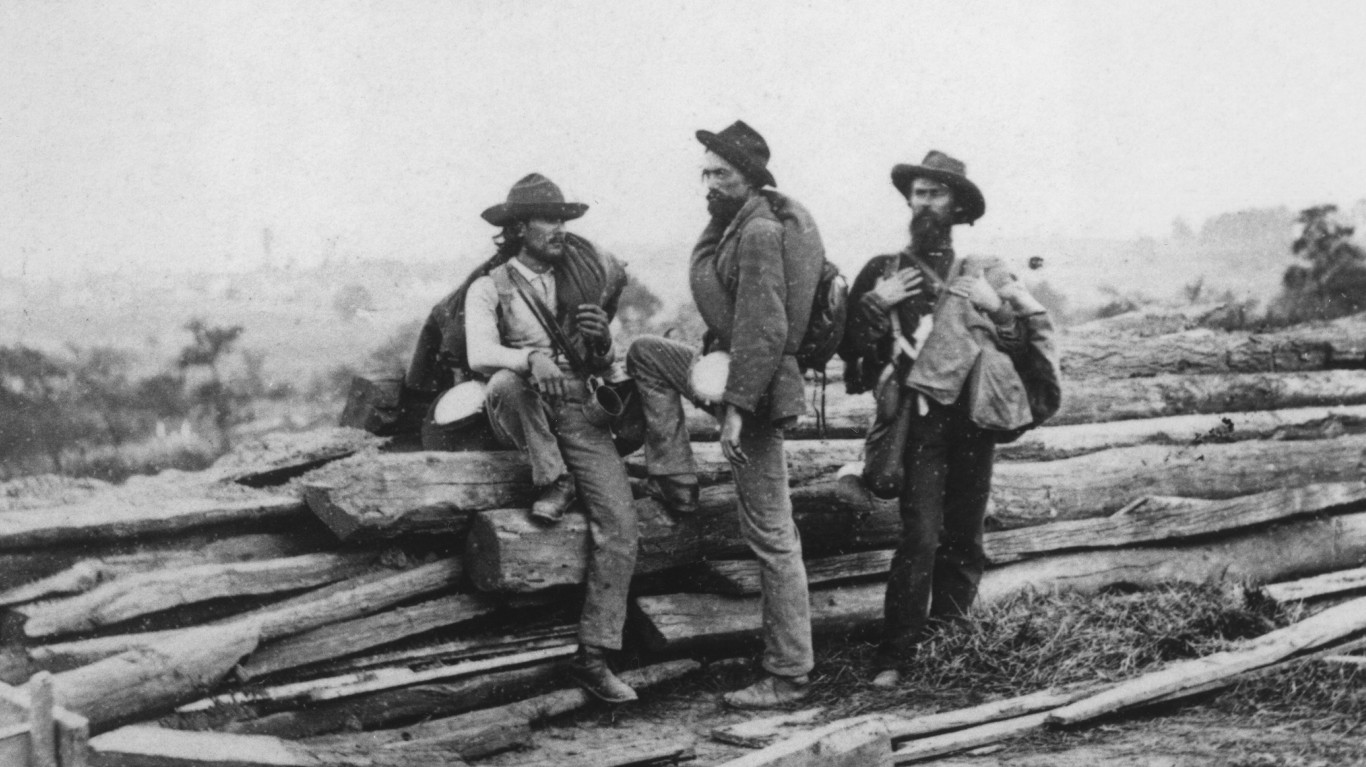
Battle of Gettysburg, Pennsylvania (July 1-3, 1863)
> War: Civil War
> American fatalities: 7,058
A major turning point in the Civil War, the Battle of Gettysburg saw the Union Army under General George G. Meade successfully rout Confederate forces, blocking General Robert E. Lee’s second invasion of the North. The battle is known for resulting in high casualties on both sides – among other things during the legendary Pickett’s Charge on the last day of the battle, when the Confederate division led by General George Pickett and two other Rebel generals launched a mutually devastating frontal attack on entrenched Union soldiers.
[in-text-ad-2]
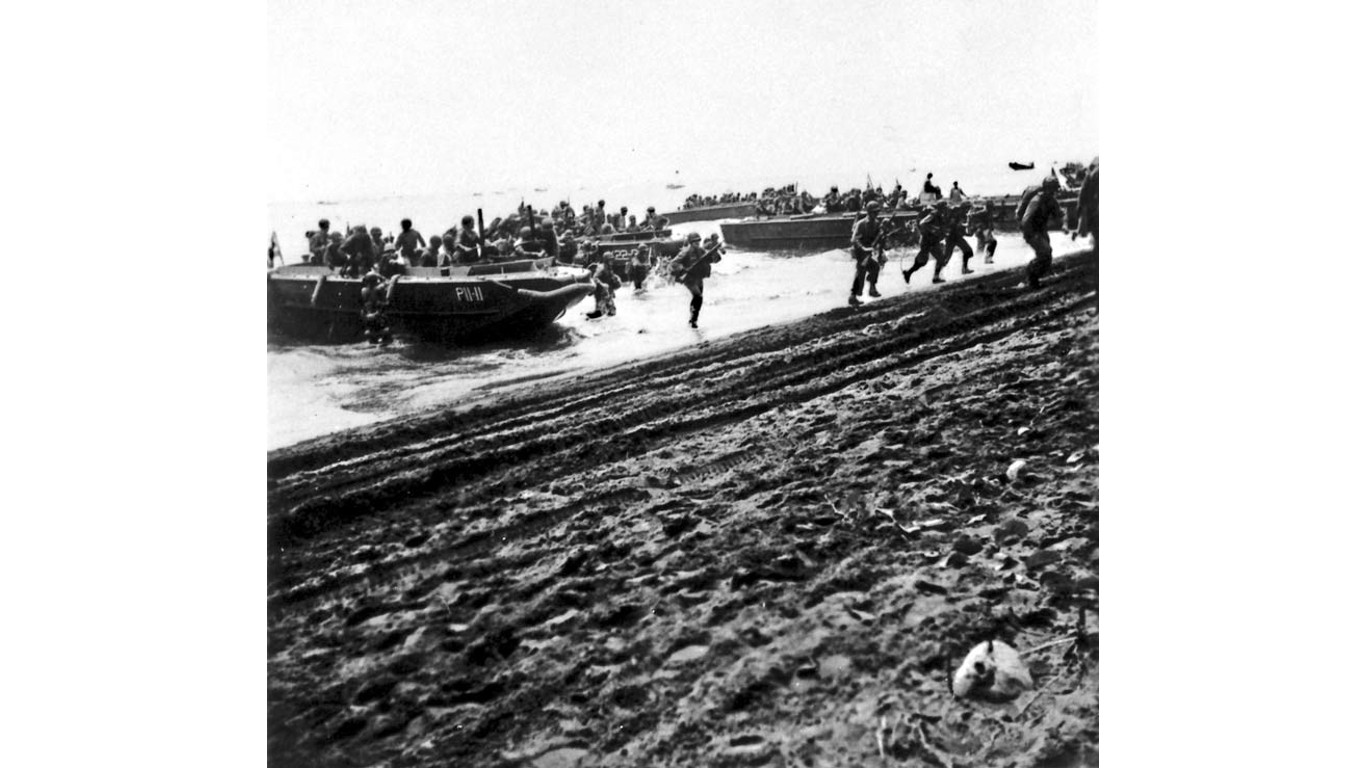
Guadalcanal campaign, Solomon Islands (Aug. 7, 1942-Feb. 9, 1943)
> War: World War II
> American fatalities: 7,100
The first major Allied land offensive in the Pacific, the Battle of Guadalcanal was aimed at securing Guadalcanal and two other islands in the Solomons to provide a base for attacks on a major Japanese base nearby. The intense six-month campaign featured fierce naval battles and brutal ground combat, with the Allies ultimately prevailing and eventually driving the Japanese out of the South Pacific.
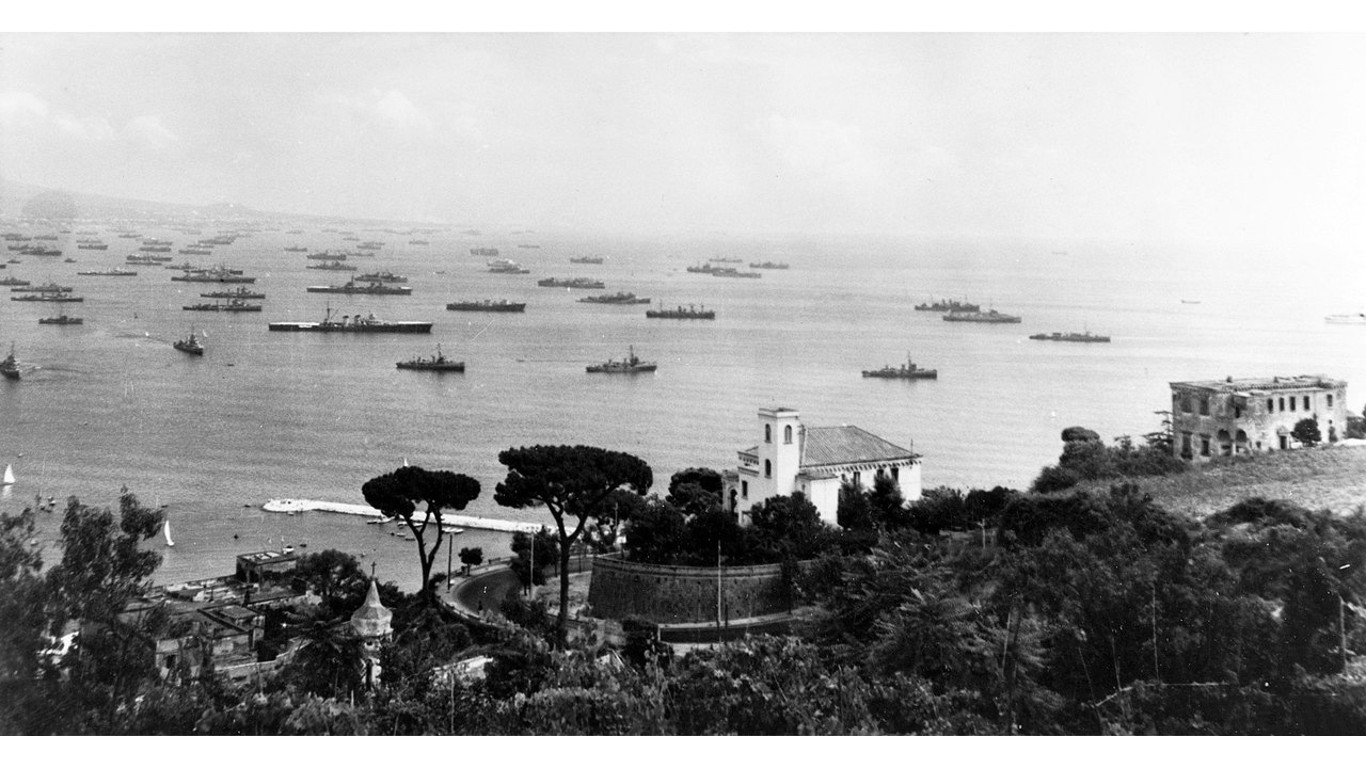
Southern France offensive (Aug. 15-Sept. 14, 1944)
> War: World War II
> American fatalities: 7,301
Code-named Operation Dragoon, this offensive, following the Allied landings in northwestern France, secured vital ports on the French Mediterranean coast from German and Vichy French forces, and compelled the German army to open another front. The success of the offensive facilitated the liberation of southern France.
[in-text-ad]
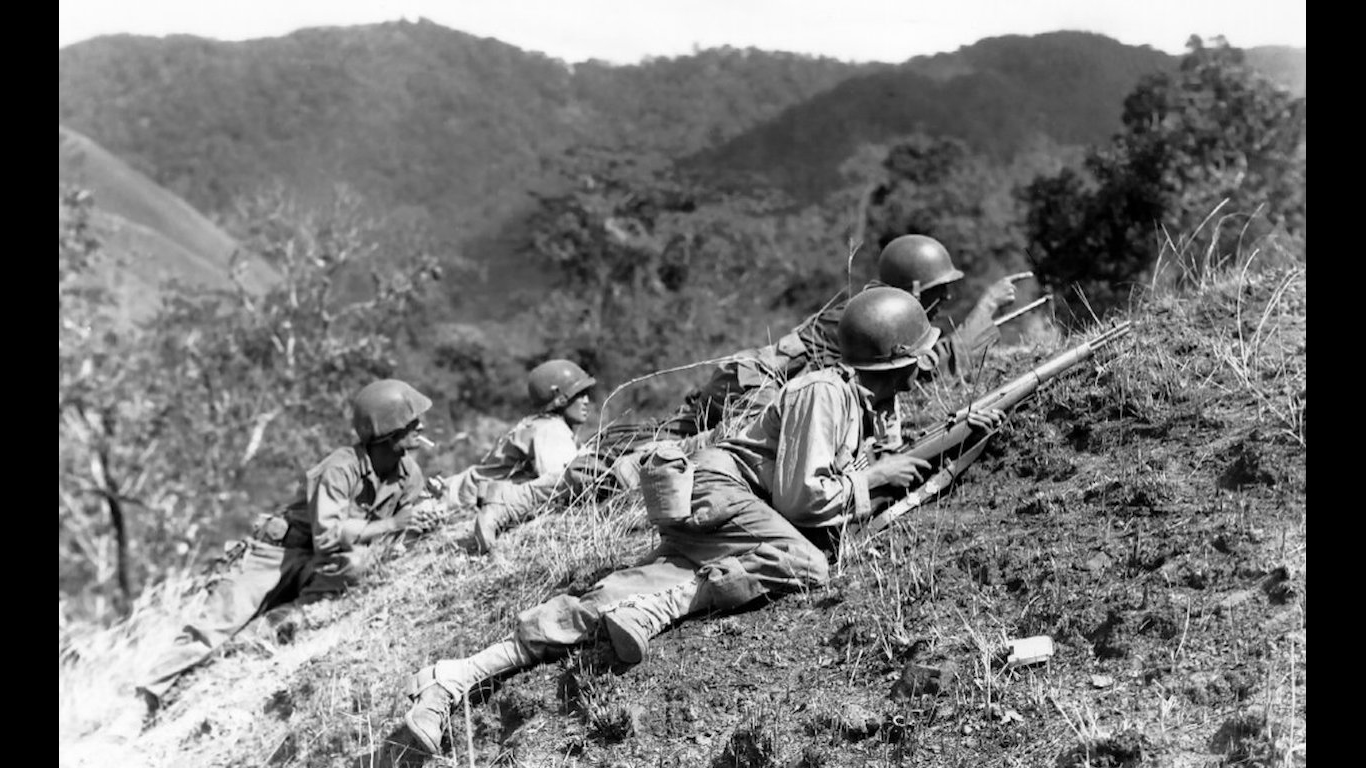
Battle of Luzon, Philippines (Jan. 9, 1945-Aug. 15, 1945)
> War: World War II
> American fatalities: 8,310
The longest battle in the Pacific pitted the U.S. and its then-colony, the Commonwealth of the Philippines, against the Japanese Imperial Army and its local collaborators. Fought to keep the island nation out of Japanese hands, the battle was eventually a victory for the Allies, and a major step towards the liberation of the Philippines. In addition to the considerable U.S. death toll, an estimated 217,000 Japanese soldiers and their Filipino allies died during the lengthy conflict, mostly from starvation and disease, and the Japanese slaughtered as many as 140,000 Filipinos, mostly civilians, in Manila in February.
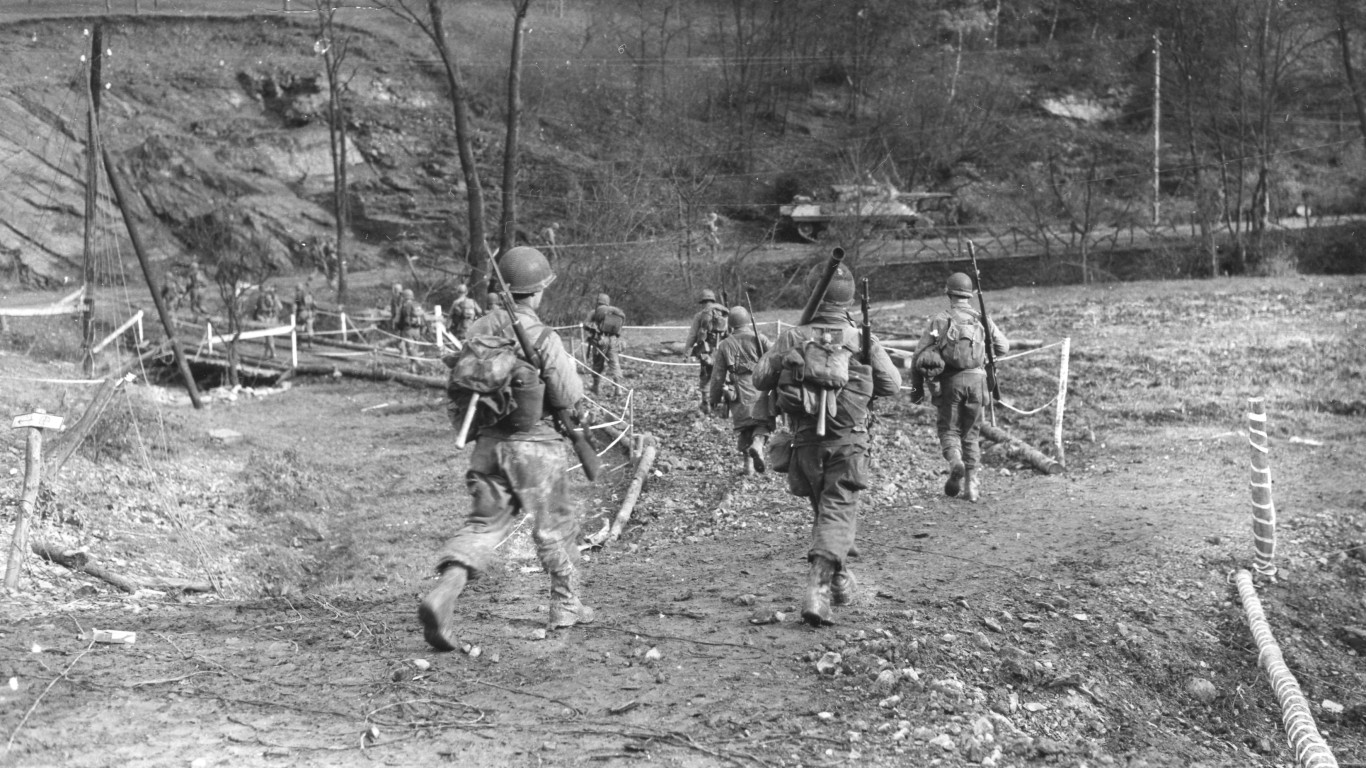
Battle of Hürtgen Forest, Germany (Sept. 19-Dec. 16, 1944)
> War: World War II
> American fatalities: 12,000
Fought in dense tracts of fortified forest near Germany’s border with Belgium, this three-month-long clash has the distinction of being the longest single battle ever fought by the U.S. Army and the longest battle on German soil during World War II. Remembered for its difficult terrain, harsh weather conditions, and fierce German resistance, it ultimately resulted in heavy casualties and only limited territorial gains for the Allied forces.
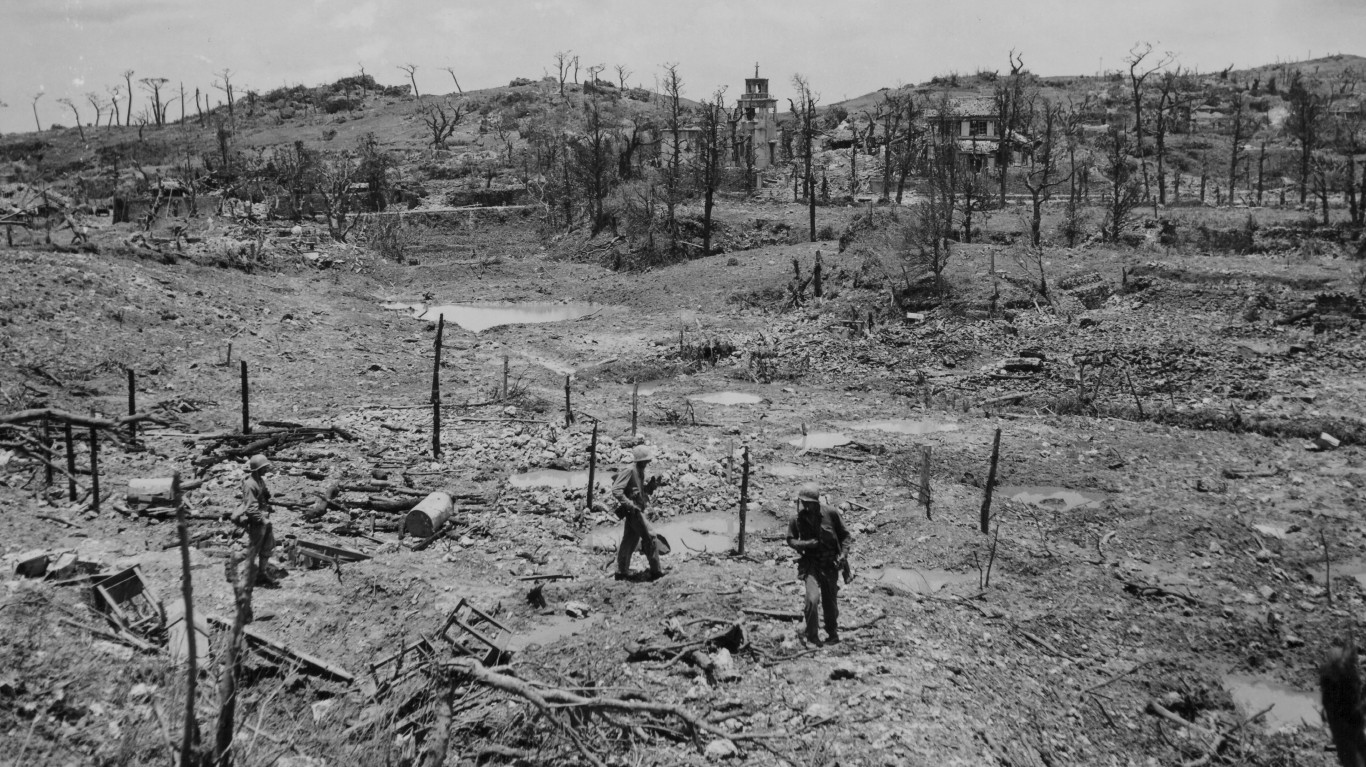
Battle of Okinawa, Japan (April 1-June 22, 1945)
> War: World War II
> American fatalities: 12,500
Part of Operation Iceberg, this was the largest amphibious assault ever mounted by the U.S. in the Pacific Theater. It was part of a complex plan to occupy Okinawa and the other Ryukyu Islands, stretching southwest from mainland Japan. Though the Allies achieved their goal, the combination of stormy weather, attacks by kamikaze pilots, and vigorous fighting on land and sea led to a large death toll on both sides.
[in-text-ad-2]
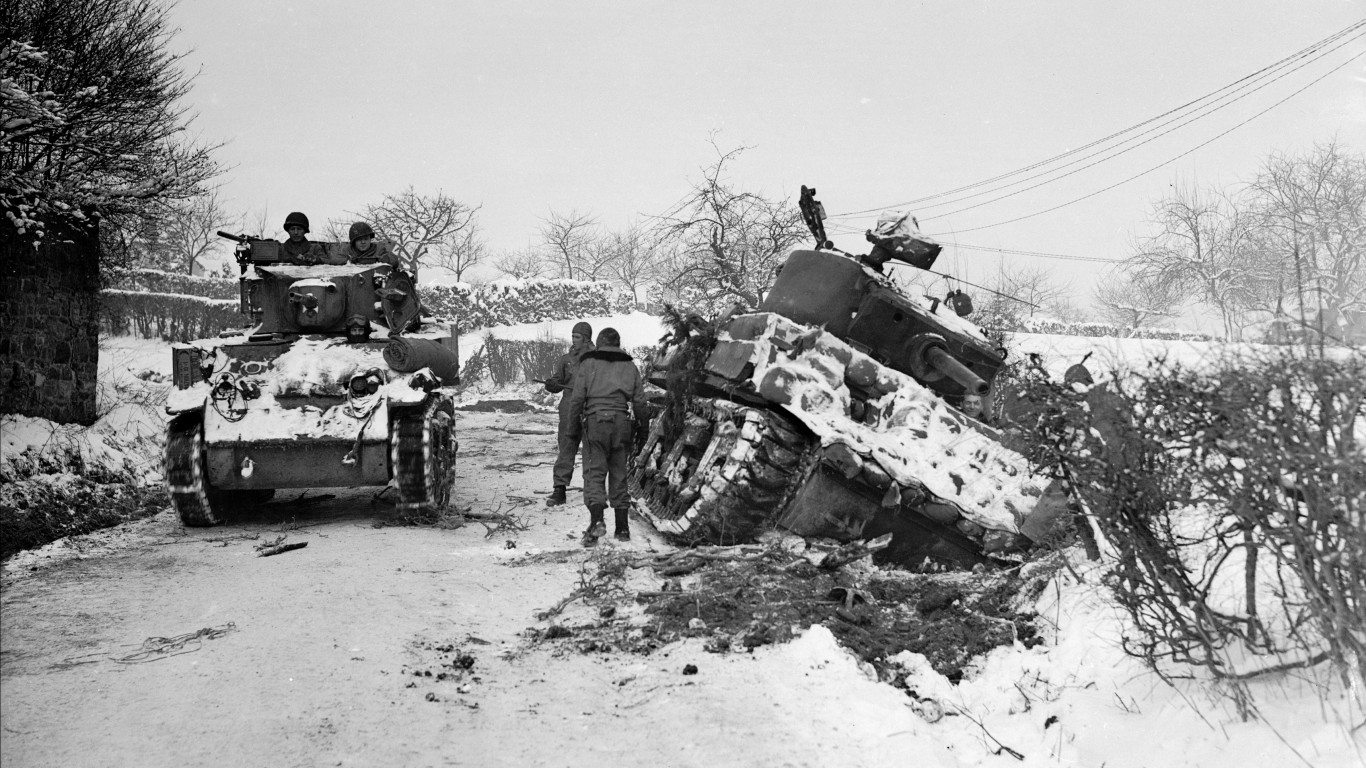
Battle of the Bulge, Luxembourg, Belgium, and Germany (Dec. 16, 1944-Jan. 28, 1945)
> War: World War II
> American fatalities: 19,200
This six-week-long battle – which began in the forests of the Ardennes region – came out of the secretive last major German offensive of the war, whose aim was to seize the strategic port of Antwerp and split the Western Allied forces, theoretically forcing them to accept a peace treaty. After initial losses, however, the Allies launched powerful counterstrikes and held the Germans in check. Both German and Allied losses were high, and the battle temporarily delayed a full-scaled Allied invasion of Germany. (The phrase “Battle of the Bulge” was coined by war correspondents to describe the bulge in the German lines as they were pushed back.)
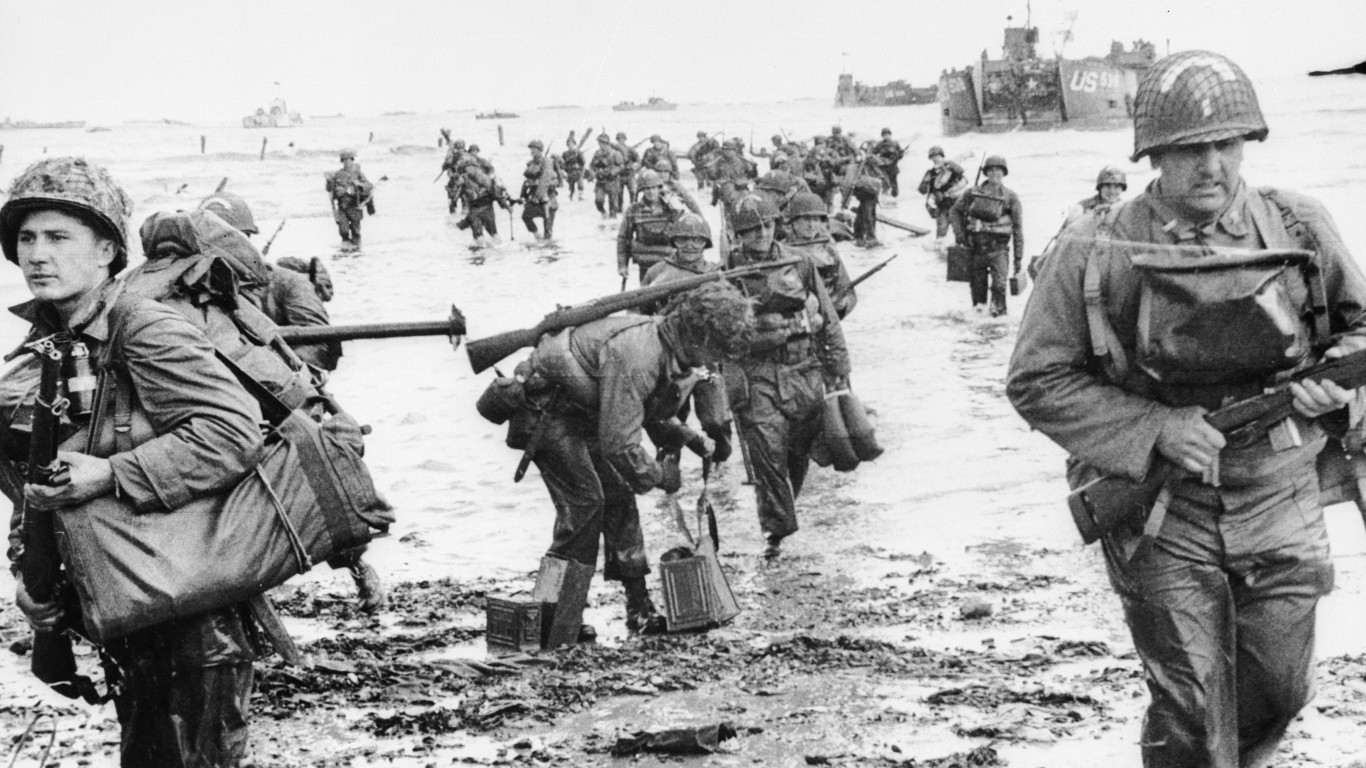
Battle of Normandy, France (June 6-Aug.30, 1944)
> War: World War II
> American fatalities: 20,668
The three-month campaign known as Operation Overlord, which began with the Allied invasion of Normandy on June 6, commonly remembered as D-Day, remains the largest amphibious assault in history, and the continuing series of battles across the north of France that followed the landing opened up the Western Front and trapped the forces of the Third Reich between the advancing Allies in the west and the Soviet Red Army in the east. The invasion ultimately led to the liberation of France and the defeat of the Nazi, but the death toll was large on both sides.
[in-text-ad]
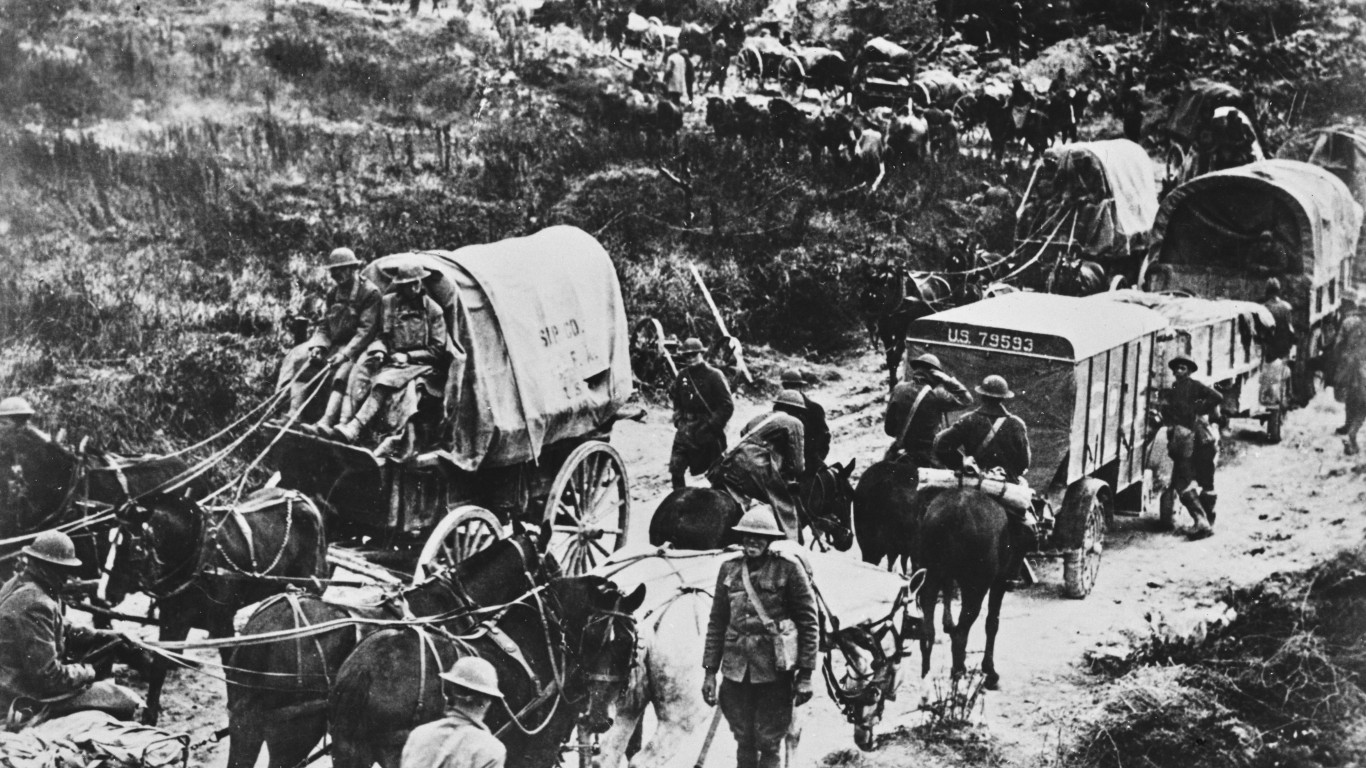
Meuse-Argonne Offensive, France (Sept. 26-Nov. 11, 1918)
> War: World War I
> American fatalities: 26,277
The Meuse-Argonne Offensive was the largest operation of the American Expeditionary Forces in World War I, with over a million American soldiers participating under the leadership of General John J. Pershing. It was also the deadliest campaign in American history. However, it played a crucial role in the final Allied push against Germany and led to the German surrender.
It’s Your Money, Your Future—Own It (sponsor)
Are you ahead, or behind on retirement? For families with more than $500,000 saved for retirement, finding a financial advisor who puts your interest first can be the difference, and today it’s easier than ever. SmartAsset’s free tool matches you with up to three fiduciary financial advisors who serve your area in minutes. Each advisor has been carefully vetted and must act in your best interests. Start your search now.
If you’ve saved and built a substantial nest egg for you and your family, don’t delay; get started right here and help your retirement dreams become a retirement reality.
Thank you for reading! Have some feedback for us?
Contact the 24/7 Wall St. editorial team.
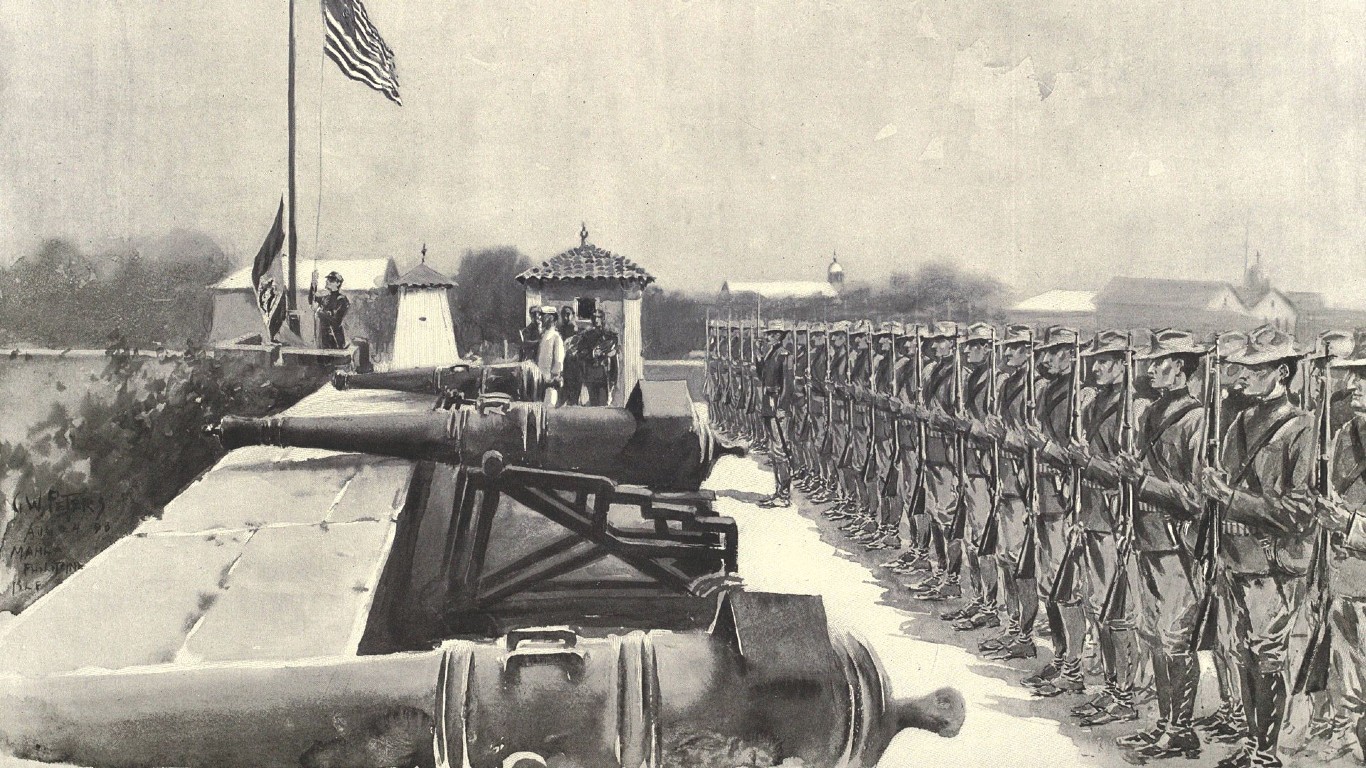 24/7 Wall St.
24/7 Wall St.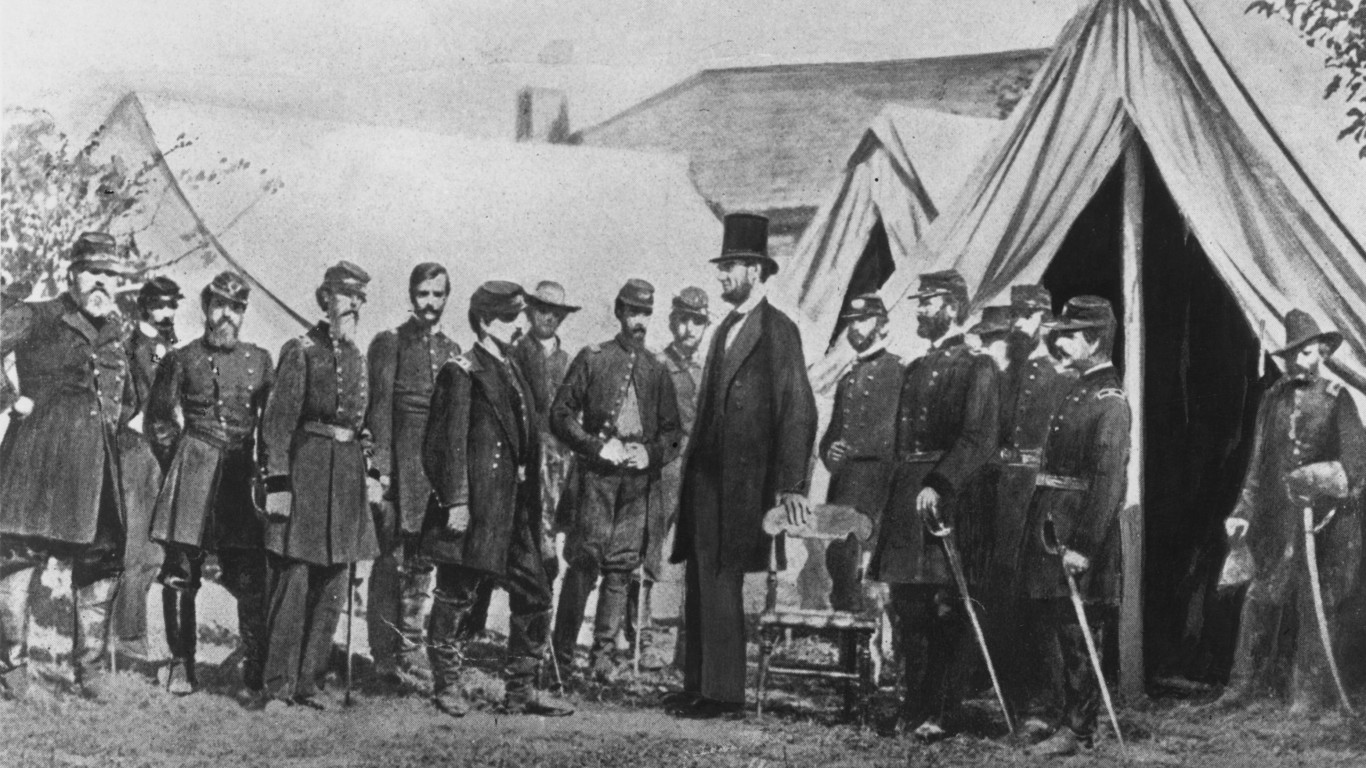 24/7 Wall St.
24/7 Wall St.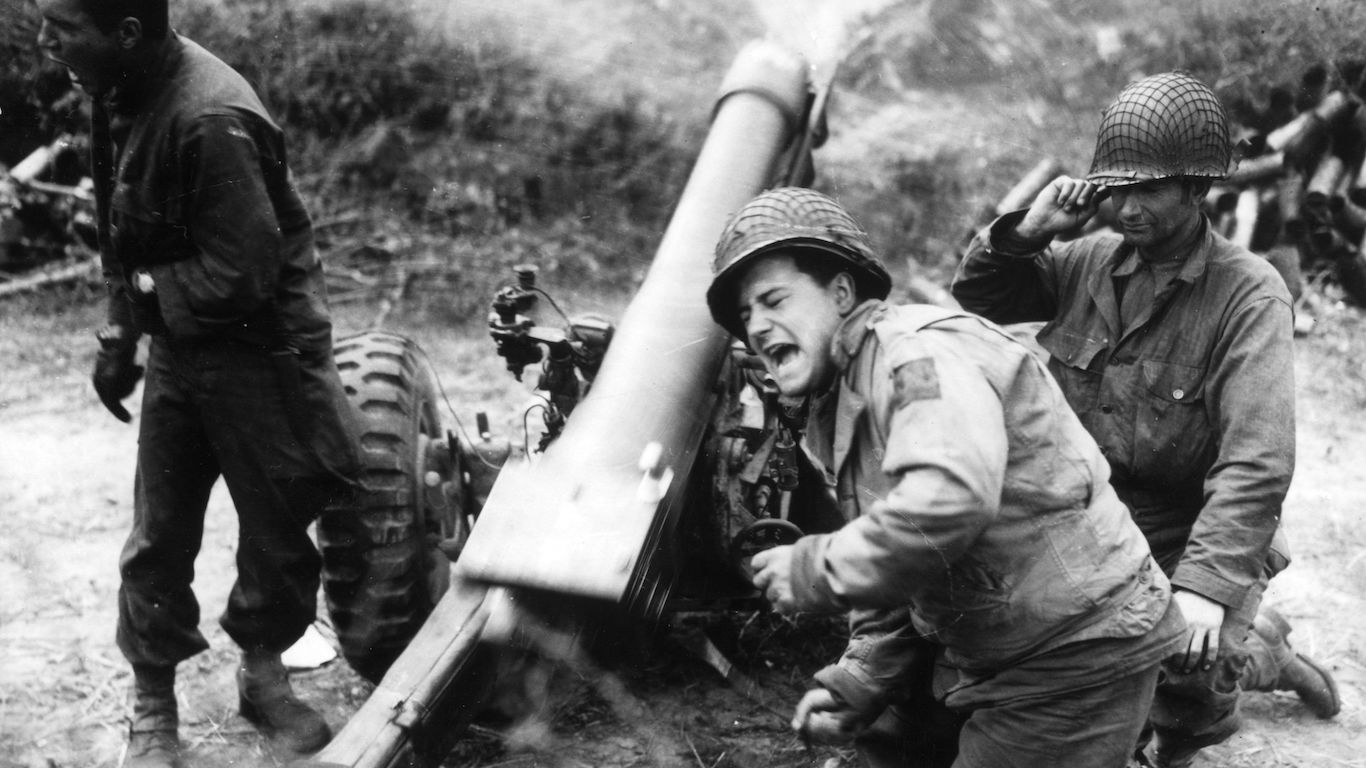 24/7 Wall St.
24/7 Wall St.